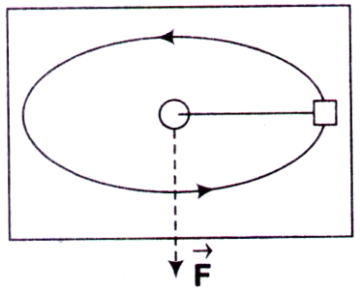A particle constrained to move along the X-axis in a potential V = kx2, is subjected to an external time dependent force $$\overrightarrow {\bf{F}} \left( t \right).$$ Here, k is a constant, x, the distance from the origin and t is the time. At some time T, when the particle has zero velocity at x = 0, the external force is removed. The particle will
A. execute SHM
B. move along positive X-direction
C. move along negative X-direction
D. remain at rest
Answer: Option D
Related Questions on Classical Mechanics
A. increases till mass falls into hole
B. decreases till mass falls into hole
C. remains constant
D. becomes zero at radius r1, where 0 < r1 < r0
A. $$\frac{c}{3}$$
B. $$\frac{{\sqrt 2 }}{3}c$$
C. $$\frac{c}{2}$$
D. $$\frac{{\sqrt 3 }}{2}c$$
The Hamiltonian corresponding to the Lagrangian $$L = a{{\dot x}^2} + b{{\dot y}^2} - kxy$$ is
A. $$\frac{{{p_x}^2}}{{2a}} + \frac{{{p_y}^2}}{{2b}} + kxy$$
B. $$\frac{{{p_x}^2}}{{4a}} + \frac{{{p_y}^2}}{{4b}} - kxy$$
C. $$\frac{{{p_x}^2}}{{4a}} + \frac{{{p_y}^2}}{{4b}} + kxy$$
D. $$\frac{{{p_x}^2 + {p_y}^2}}{{4ab}} + kxy$$
A. circular
B. elliptical
C. parabolic
D. hyperbolic


Join The Discussion